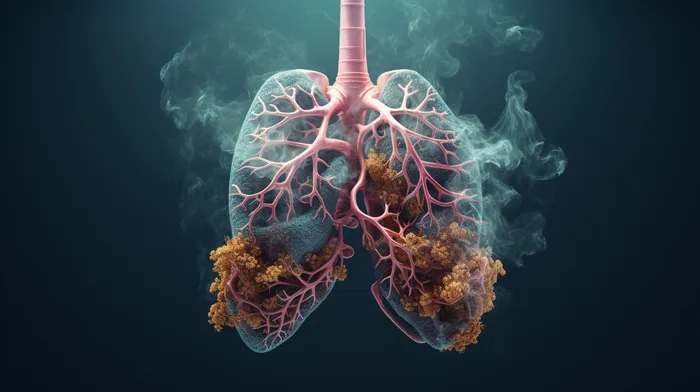Every week, there are over 4,000 new cases of lung cancer in the United States, with about 3,000 Americans dying from the disease during the same period. While progress in cancer treatment has been made over the years, it is especially challenging to treat lung cancer, mainly due to the way the disease lies dormant for decades before presenting itself. Anything that we can learn about how lung cancer develops is crucial to finding more effective ways of detecting, preventing, and treating the disease.
The Dormant Years
Lung cancer typically begins when an initial genetic change occurs and leads to the disease taking root; however, the cancer process can begin as much as 20 years before becoming apparent and leading to a diagnosis. During those years, undetectable genetic shifts continue to occur with multiple cellular developments, making it challenging to track and predict the growth of cancerous tumors.
As the cancer progresses, various genetic faults take place in different sections of lung cancer tumors. Each part of the tumor then develops down unrelated genetic paths. This complex evolution causes a lung cancer tumor to become, in effect, several unique genetic entities and makes the tumor very difficult to control and destroy.
Understanding Lung Cancer Growth
Researcher Charles Swanton, who contributed to the groundbreaking study that shed light on lung cancer’s unique development process, is acutely aware of how difficult it has been to create targeted lung cancer treatments. He said, “Survival from lung cancer remains devastatingly low with many new targeted treatments making a limited impact on the disease. By understanding how it develops, we’ve opened up the disease’s evolutionary rule book in the hope that we can start to predict its next steps.”
The key to combating lung cancer seems to lie in detecting the disease earlier in the process. Early detection increases the likelihood of successful treatment. Unfortunately, two out of three people with lung cancer are already in an advanced stage when they receive their diagnosis, which means that treatment is less likely to succeed and often has a limited impact.
The Importance of Early Detection
Researcher Nic Jones, who worked alongside Swanton, emphasized the need to find better ways of detecting lung cancer in its early stages. He noted, “This fascinating research highlights the need to find better ways to detect lung cancer earlier when it’s still following just one evolutionary path. If we can nip the disease in the bud and treat it before it has started traveling down different evolutionary routes, we could make a real difference in helping more people survive the disease.”
The Future of Lung Cancer Prevention and Treatment
One possible avenue to address the challenge of detecting lung cancer early is screening programs. In recent years, the U.S. Preventive Services Task Force has issued a recommendation for annual lung cancer screening for individuals who are at an elevated risk of developing the disease due to age and smoking history. While screening programs hold promise, optimal ways to detect lung cancer as early as possible while still being cost-effective are still being explored, and continued research is necessary for this aspect of prevention.
Studying the genetic makeup of lung cancer tumors will also be invaluable in creating targeted treatments for the disease. Already, researchers have identified several genetic mutations related to lung cancer that can be helpful in crafting treatments. Recognizing recurring genetic patterns in tumors could lead to new therapies that are more successful at getting the cancer under control.
Ultimately, the best way to prevent lung cancer starts with preventing the most common risk factors: exposure to tobacco smoke and radon gas. The American Cancer Society recommends maintaining a smoke-free home and workplace, ensuring that your home has adequate ventilation, and testing your home for radon. These preventive measures, coupled with the ongoing research into lung cancer detection and treatment, can lead to a future with fewer cases of this devastating disease.



